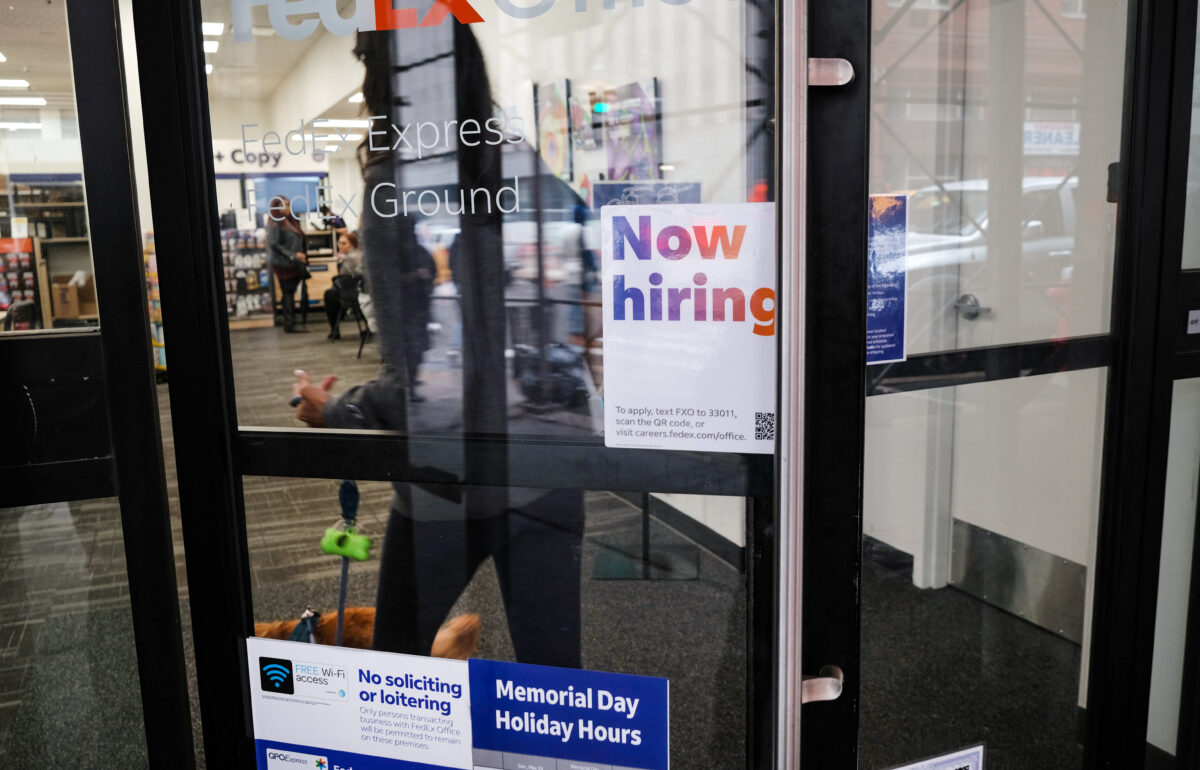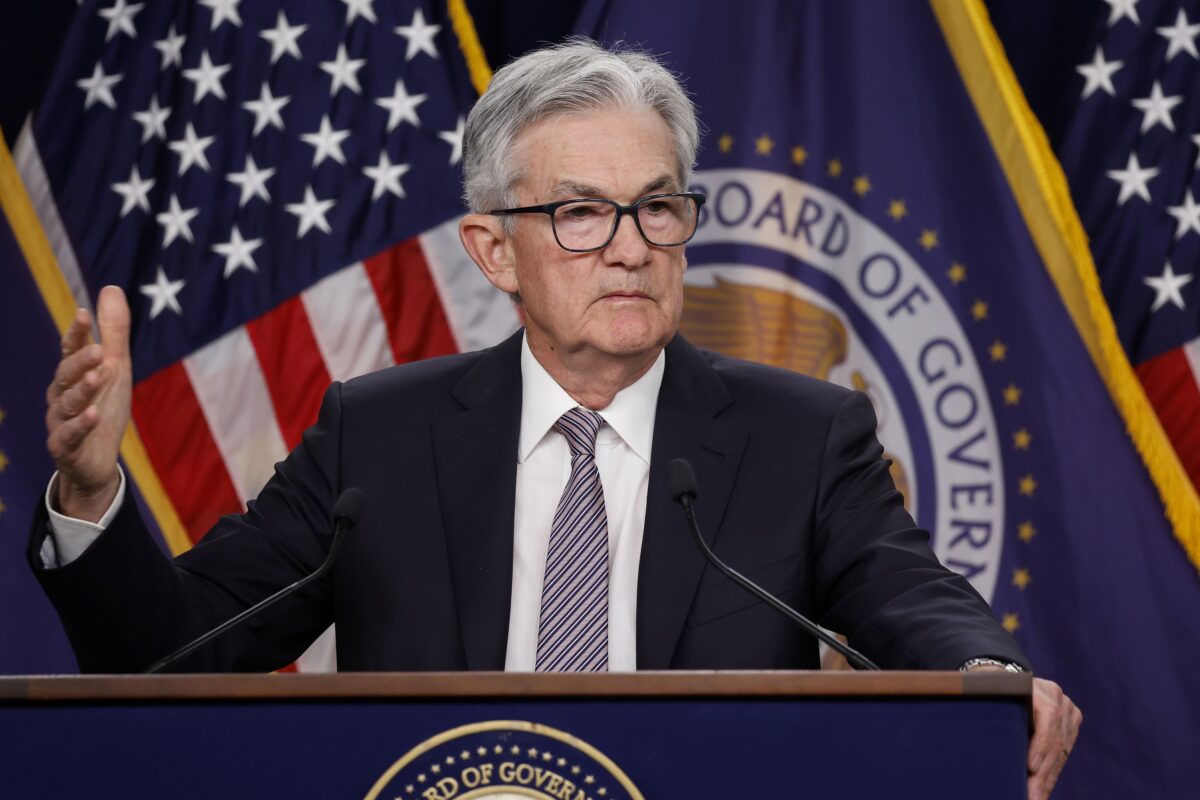


The U.S. economy is expected to have added 180,000 new jobs in April, according to consensus estimates. If the forecasts are accurate, this would represent the smallest monthly gain since December 2019.
In recent weeks, signals have indicated that the national labor market is beginning to cool off, a moderating trend that would please an inflation-fighting Federal Reserve.
“There are some signs that supply and demand in the labor market are coming back into better balance,” Fed Chair Jerome Powell told reporters during the post-Federal Open Market Committee (FOMC) policy meeting press conference on May 3.
After two strong months of employment gains, the March non-farm payroll (NFP) report confirmed the fewest new jobs since December 2020, as higher borrowing costs and price pressures weighed on employers.
The unemployment rate also edged lower in March, dipping to 3.5 percent, the lowest level in 50 years. Economists anticipate a slight jump to 3.6 percent in the May 5 Bureau of Labor Statistics (BLS) report.
Market observers will keep an eye on wage growth to determine if labor costs are cooling.
Average hourly earnings slowed to 4.2 percent in March, down from 4.6 percent in the previous month. It represented the smallest boost in annual average hourly earnings since June 2021.
“The slowdown in pay growth gives the clearest signal of what’s going on in the labor market right now,” said Nela Richardson, the chief economist at ADP.
Powell estimates that wage increases need to be closer to 3 percent “to be consistent with inflation over a longer period of time.”
Real average hourly earnings (inflation-adjusted) fell 0.7 percent year-over-year in March. Moreover, real average weekly earnings—the change in average hourly earnings combined with a drop in the average workweek—tumbled 1.6 percent.
Other data beyond the monthly NFP support economists’ expectations that the red-hot labor market is being doused by the Fed’s tightening cycle and broader economic uncertainty.
This week, the March Job Openings and Labor Turnover Survey (JOLTS) revealed that job openings were below 10 million for the second consecutive month. In addition, the number of hirings was flat, and quits maintained its downward trajectory.
While layoffs eased last month, U.S.-based employers still announced nearly 67,000 job cuts, adding to the haul of 337,411 in the first four months of 2023, according to Challenger, Gray & Christmas, Inc. data. This is up 322 percent from the same period a year ago.
“Finance, both traditional and digital, are grappling with rate increases and the potential for lower consumer spending, just as Retail and Consumer Manufacturers are. We’ve also seen large banks fail recently, which will mean a more cautious approach in the sector going forward,” said Andrew Challenger, labor and workplace expert and Senior Vice President of Challenger, Gray & Christmas, in the report.
Year-to-date, the Challenger figures show that the technology sector announced 113,914 job cuts, followed by retail (36,115) and manufacturing (19,116).
The Department of Labor reported that initial jobless claims surged to 242,000 for the week ending April 29, up from 229,000 in the previous week. This also topped market estimates of 240,000. Continuing jobless claims tumbled to 1.805 million, while the four-week average, which removed the week-to-week volatility, advanced to 239,250.
That said, the surprise number came from the ADP National Employment Report, revealing that private-sector employers added 296,000 new jobs in April, up from 142,000 in March and higher than economists’ expectations.
“Employers are hiring aggressively while holding pay gains in check as workers come off the sidelines. Our data also shows fewer people are switching jobs,” Richardson noted.
Overall, the latest metrics suggest a positive outlook for the jobs report, especially if the numbers are revised for previous months, says Robert Hughes, an economist at the American Institute for Economic Research.
“Upward revisions to prior months would be favorable signs and new job creation of at least 150,000 for April, especially if combined with healthy earnings increases, would continue to support future consumer spending,” he wrote. “Conversely, a weak jobs report, a low level of job creation combined with weak earnings growth could begin to raise serious concerns for the expansion.”
Dean Baker, a senior economist at the Center for Economic Policy Research, purports that the April jobs numbers could offer evidence of a soft landing or early signs of a recession.
“The economy was and is slowing, which it had to do to keep inflation contained,” he said in a note. “The big question is whether the slowdown turns into a recession, costing millions of workers their jobs. So far, the evidence on this front has been very positive, but the April jobs report will be another big piece of the puzzle.”
As for projections, Aaron Terrazas, the chief economist at Glassdoor, projects job gains between 187,000 and 202,000 and an unemployment rate as high as 3.8 percent. Terrazas also expects wage growth to slow to 4 percent.
The one area he plans to monitor is the labor force participation rate.
Although it has improved in the past four months, “there is likely little upside left to participation” for two reasons.
“Overall participation remains depressed primarily due to demographic shifts,” he said. “Return-to-office mandates could adversely affect women’s labor force participation.”
In March, the labor force participation rate climbed to 62.6 percent, the highest since March 2020.
Could the U.S. labor market grind to a halt in the coming months?
Powell purported that it is possible for job openings to fall without unemployment increasing.
“It’s possible that we can continue to have a cooling in the labor market without having the big increases in unemployment that have gone with many prior episodes,” he said. “And that would be against history. I fully appreciate that would be against the pattern.”

